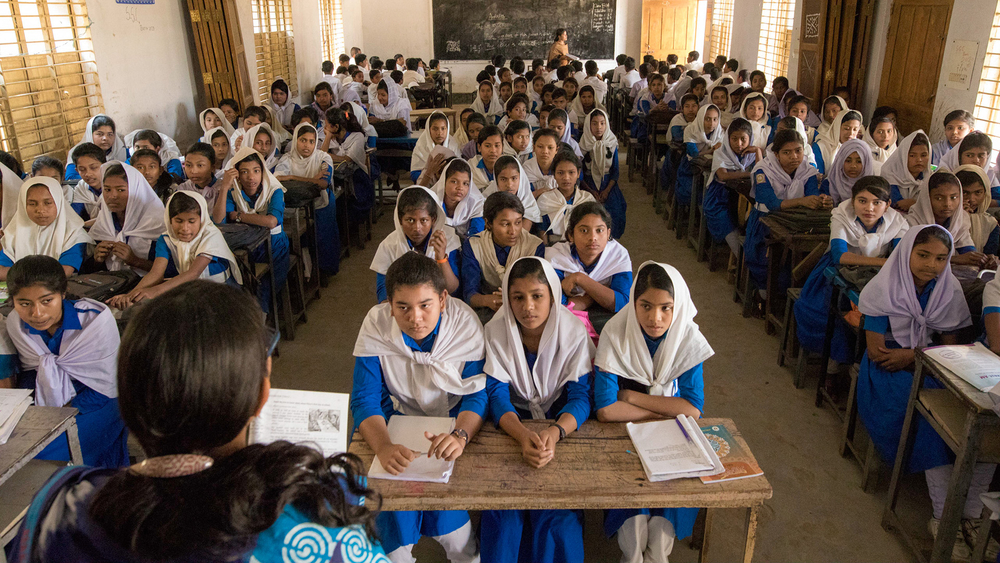In the villages around Shakiso, children have been born with deformities, and women have had so many miscarriages they believe they are cursed; the bones of cattle have snapped like twigs, and men’s bodies have crumpled and collapsed without warning.
Residents who live near Ethiopia’s largest gold mine, Lega Dembi, say that for the past 15 years or so, life-threatening illnesses, disabilities, and mysterious ailments have become so widespread that almost no household has been left untouched.
“We are the walking dead,” Dembela Megersa told The New Humanitarian, describing the unaccountable pain in his back that has afflicted him for years.
At a glance: Birth defects and rising unrest
- The mine was shut amid environmental concerns in 2018 but may be set to re-open.
- One study shows that the birth defect rates in communities near the mine are the highest recorded in the country.
- A separate environmental audit shows cyanide in the water; another study shows high levels of mercury also in the water and soil.
- A 100-kilo vat of mercury that had been stored at the mine site could not be accounted for by auditors who said they were refused access to the storage area.
- Residents say there were no warnings about potential toxins in the water.
- Aid for 80,000 people displaced in Ethiopia’s Oromia region, where the mine is located, has been hampered due to unrest.
His 25-year-old wife, Jibo Buno, sitting beside him, recounted the misery of five miscarriages in as many years, followed by a stillbirth. The lifeless baby’s body was mangled by deformity when she delivered it seven months into her sixth pregnancy, she said.
Both blame their health troubles on Midroc Gold, a private company belonging to Ethiopia-born Saudi tycoon Mohammed Hussein Al-Amoudi.
The company operates the mine, which was closed shortly after its licence was renewed in 2018, following local protests over the alleged health risks.
At the time of the closure, the government promised an independent investigation into the allegations and yet, despite persistent community concerns, there are indications the mine may soon be allowed to open again.
In an investigation that spanned several weeks, The New Humanitarian interviewed dozens of residents in villages around the town of Shakiso, in the south of the country, and gained access to reports that raise questions about the mine’s environmental safety record.
The sum of those reports – which have yet to be made public – paints a worrying picture: the area around the mine has the highest recorded incidence of birth defects in the country, and water that has long been used by locals contains high levels of mercury and cyanide.
Midroc officials replied to repeated queries from TNH by asking that all questions be directed to the mines ministry. When asked about the health allegations, the mines ministry referred questions to the prime minister’s office, which re-directed questions back to the ministry.
‘Talk with the local community and answer our questions’
In the villages around Lega Dembi, anger is mounting.
The community’s concerns over the mine have added to other long-standing grievances and a sense of alienation throughout this part of Oromia, Ethiopia’s most populous and restive region.

Local rebel groups have been emboldened and pose difficulties for Prime Minister Abiy Ahmed in his bid for re-election, which had been scheduled for August but is now postponed due to the coronavirus pandemic.
The deepening unrest in the region over the past year has driven 80,000 people from their homes in the Guji area of Oromia, which includes Shakiso; robbed communities of their livelihoods and access to food and markets; and sharply curtailed aid operations, according to the UN’s emergency aid coordinating body, OCHA.
Local Oromo activists claim enduring marginalisation despite being the country’s largest ethnic group, and rebels demand greater autonomy from the central Ethiopian state.
Community leaders – as well as environmental and mining experts – say establishing the source and scale of any toxic contamination, determining responsibility, and formulating a response with community buy-in are necessary before a decision is made to re-open the mine.
Felix Horne, a senior researcher at Human Rights Watch, said: “The Lega Dembi mine is a powerful example of how the government should develop its mineral resources only after proper transparent environmental assessments and community consultation.”
As Aagaa Tenteno, an Abba Gada (traditional elder), explained: “If the government wants to re-open the mine, first of all it must talk with the local community and answer our questions.”
On a recent visit to the area, TNH observed livestock drinking from streams, which – due to the unusual design of the facilities – flowed through or near the tailings ponds. Residents told TNH they had never been told to avoid the water.
Below: Satellite view of the Lega Dembi mine, which is located several miles from Shakiso.






.jpg)